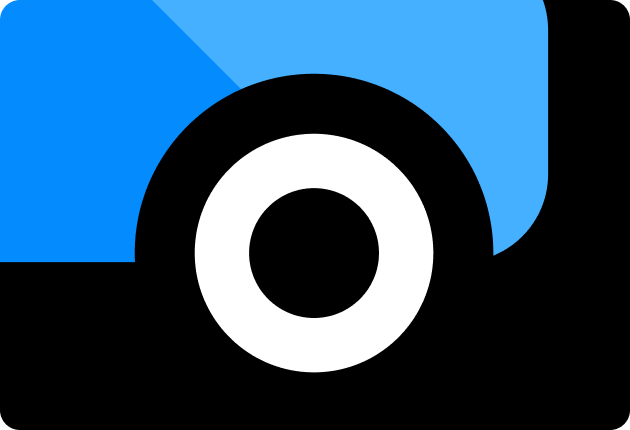
In this Article:
Last Updated on 2023-11-03
Why DoorDash Makes For a Complicated Full Time Job
We worked with these active, experienced gig-workers to write this article and bring you first-hand knowledge.

5 years of experience as a DoorDash Dasher

Experienced writer/researcher in the gig industry working alongside our gig-workers

8 years of experience working across DoorDash, Instacart, Postmates, Uber, and Lyft

7 years of experience working across DoorDash, Lyft, Amazon Flex, and Instacart
The information provided in this post is for informational purposes only and should not be construed as financial, legal, tax, or insurance advice. The content contains general information and may not reflect current developments. Any reader should consult with a professional to obtain financial, legal, tax or insurance advice tailored to their specific circumstances.
Even though DoorDash was originally envisioned as a side hustle, it’s entirely possible for it to replace a full-time gig, and many Dashers do so.
As far as DoorDash’s official policies and rules are concerned, you’re allowed to Dash as much or as little as you want (with a few restrictions in California due to Prop 22). So there’s nothing holding you back from dashing full-time if that’s what you want to do.
But it’s important to keep in mind that DoorDash isn’t a traditional job. In fact, it’s not a job at all, it’s self-employment. So if you want to make it into a full-time income source, you’re going to need to assume the attitude of a business owner — along with all the responsibilities, risks, rewards, and concerns that come along with that.
Is DoorDash a good full-time job?
When it comes to work, “good” is a very subjective term. DoorDash is a large, stable company that follows all relevant laws and regulations, so it meets the basics of what you’d want from an income source.
But if you’re dashing full-time, DoorDash wouldn’t be your employer, it would be your client, and your employer would be yourself. As a self-employed person, you’ll need to manage your own time, assume more risk, pay more taxes, get your own health insurance, and more — you don’t have an employer taking care of you.
Despite all that, DoorDash offers something most other forms of work can’t: almost total freedom to work when, how, and where you want (pending local availability). Some Dashers travel across the country, dashing in every city they pass through to support themselves and their travel adventure — that’s not something you’ll find almost anywhere else.
For some, that freedom is more than worth the higher taxes and reduced stability. And for others, it isn’t. You’ll have to decide for yourself where you lie on that spectrum.
However, even if you decide that the self-employed life is for you, you should keep in mind that DoorDash isn’t the only way to live that lifestyle. Multi-apping, which means using multiple gig apps, like Instacart, Uber, and DoorDash (often completing orders across all apps simultaneously), can give you the same degree of freedom but with a bit more security due to the diversification of your income sources.
One of the biggest concerns about dashing full-time is that DoorDash has the power to deactivate your account — it’s essentially getting fired, which can happen at any job. Usually, this only happens if you severely break the rules or if your customer rating falls below 4.2, but there’s always a chance you could get deactivated by mistake. If you decide to multi-app, you’ll have an extra layer of financial security because it’s very unlikely you’d get deactivated from multiple platforms at once.
How much can you make full-time?
Dashing is essentially the same as running a small business, and a business’s success is based largely on the owner’s skill alongside other market factors like demand and location. So, the amount you make from DoorDash will depend greatly on your skills and strategies, but there’s an element of luck involved too.
Faith McLaughlin, who has been dashing since 2022 and driving Uber and Lyft since 2016, says “I remember when people were making tons of money in San Francisco doing Lyft and Uber, but in San Diego the market was flooded with a ton of drivers so competition was tough. Additionally, if you live somewhere slightly rural, then working for DoorDash or any other gig work might not be profitable at all due to distance or lack of work. But, then again, it could be very lucrative if you're the only driver around that area.”
Let’s break it down. We’ll come up with a formula that can help you estimate for yourself based on what “working full time” means to you. And keep reading to see some examples of what real Dashers are out there making.
Average Earnings Per Hour = (Average Base Pay + Average Tip) * Average Deliveries Per Hour
Estimated Gross (Before Expenses) Earnings Per Year = Hours Worked Per Day * Days Worked Per Year * Average Earnings Per Hour
Base pay is what DoorDash pays you for completing an offer, and ranges from $2-$10/offer. Dashers get to keep 100% of their tips (assuming the order is placed through the DoorDash app — orders placed through restaurant-specific websites or apps often handle tips differently). Bonuses include rewards for completing challenges and referring friends.
Dashers generally believe they can make something like 2 to 4 deliveries per hour worked.
Tips are typically 10-20% of the order value (not the base pay, but the actual price of the food the customer ordered). The average DoorDash order was $33 in 2021, so we can assume $3-$6 of tips per order.
Bonuses are too unpredictable, so we won’t include them in this calculation.
And then, the tricky factor: expenses.
Don’t forget to factor in expenses
The numbers above describe your estimated gross revenue (“Earnings Per Year”), but your actual income would be your profits or net revenue, which is gross revenue minus expenses.
If you’re dashing with a car, your expenses will include your car insurance, gas, car depreciation, and car maintenance. Other costs that don’t count as direct expenses but should be kept in mind are health insurance (you’ll have to pay for your own instead of getting it through your employer) and higher taxes due to self-employment tax.
If you dash on a bike, scooter, moped, or motorcycle, your expenses will be lower.
Let’s make a handful of assumptions about your vehicle expenses:
- A car gets 25.4 mpg (source)
- A gallon of gas is $3.58 (source)
- Therefore, cost of gas per mile is $0.14
- $0.0968 per mile in maintenance and repairs (source)
- Assuming you are driving an inexpensive 5+ year old car, your depreciation cost is probably $1-3k/year (source). Let’s call it $0.10 per mile.
- In total, we’ll assume the car expenses you accrue by doing DoorDash total to $0.34 per mile
We can use that number to estimate DoorDash expenses for those who dash in a car. Let’s create another formula:
Estimated Yearly Expenses = ((Average Miles Driven Per Workday * $0.34/mile) * Number of Days Worked Per Year) + Year Of Health Insurance Premiums + Year Of Rideshare Car Insurance Premiums
Full-time Dashers frequently report that they drive about 100 miles per workday. Health insurance premiums can vary a lot, averaging maybe $8,000 to $20,000+ if you have a family (don’t forget to consider the out-of-pocket maximum and deductible as well). Rideshare car insurance should only be about $100 - $300 per year.
You can plug those numbers into a full formula:
How Much You’re Making (Net Pre-Tax Estimate) = Estimated Earnings Per Year - Estimated Yearly Expenses
Keep in mind that you’ll be able to deduct your expenses to reduce your tax burden — you’ll be taxed on your income minus expenses instead of your full income. This calculation is too complex to do here, so just be aware that you’ll get a bit of a break.
How much full-time Dashers earn: 3 real-world examples
Now that we have the formulas we need to estimate yearly income from dashing full-time, let’s take a look at some examples of how much real Dashers are earning.
Scott Jones
Scott Jones lives in Oregon and has been dashing since 2018. Here’s his best guess for what numbers he’d be earning if he worked “full time” for DoorDash:
Average Base Pay: $7
Average Tip: $2
Average Deliveries Per Hour: 2.5
Average Hours Worked Per Day: 4
Average Miles Driven Per Workday: 50
Days Worked Per Year: 300
Year Of Health Insurance Premiums: $0
Year of Rideshare Insurance Premiums: $240
We can use the formulas from above to estimate yearly earnings:
Average Earnings Per Hour = ($7 + $2)/delivery * 2.5 deliveries/hour = $22.50/hour
Estimated Gross Earnings Per Year = 4 hours/day * 300 days/year * $22.50/hour = $27,000/year
Estimated Yearly Expenses = ((50 miles/day * $0.34/mile) * 300 days/year) + $0/year + $240/year = $5,340/year
Estimated Yearly Income = $27,000/year - $5,340/year = $21,660/year
Note that Scott only works four hours on an average day — that’s a strategic decision. Scott noticed that trying to work eight hours per day was less efficient as there would be a lot of wasted time during which no orders would come through. To optimize his dashing, he chooses to work only during peak hours when demand is high enough, which increases his hourly rate.
Also, notice that Scott’s health insurance premium is $0 — that’s because he’s on Medicaid, which is free for those who qualify.
Faith McLaughlin
Faith McLaughlin lives in San Diego and has been doing gig work since 2016. Here are her estimated:
Average Base Pay: $11.50
Average Tip: $5.85
Average Deliveries Per Hour: 1.3
Hours Worked Per Day: 8
Days Worked Per Year: 260
Average Miles Driven Per Workday: 75
Year Of Health Insurance Premiums: $576
Year of Rideshare Insurance Premiums: $1,200
Now, plugging into the formulas:
Average Earnings Per Hour = ($11.50 + $5.85)/delivery * 3 deliveries/hour = $22.56/hour
Estimated Gross Earnings Per Year = 8 hours/day * 260 days/year * $22.56/hour = $46,924 /year
Estimated Yearly Expenses = ((75 miles/day * $0.34/mile) * 260 days/year) + $576/year + $1,200/year = $8,406/year
Estimated Yearly Income = $46,924 /year - $8,406/year = $38,518/year
Note that Faith’s base pay and tip are significantly higher than Scott’s. That’s most likely because Faith lives in California, which has a higher cost of living, and Dashers there are covered by California Prop 22.
Ryan Shaw
Ryan Shaw is a 31-year old father of two and has been dashing since 2019. Here’s his cost and earnings breakdown:
Average Base Pay: $2.50
Average Tip: $6.30
Average Deliveries Per Hour: 1.7
Hours Worked Per Day: 8
Days Worked Per Year: 280
Miles Driven Per Workday: 100
Year Of Health Insurance Premiums: $623
Year of Rideshare Insurance Premiums: $1,080
Plugging into the formulas, we get:
Average Earnings Per Hour = ($2.50 + $6.30)/delivery * 1.7 deliveries/hour = $14.96/hour
Estimated Gross Earnings Per Year = 8 hours/day * 280 days/year * $14.96/hour = $33,510.40 /year
Estimated Yearly Expenses = ((100 miles/day * $0.34/mile) * 280 days/year) + $623/year + $1,080/year = $11,223/year
Estimated Yearly Income = $33,510.40/year - $11,223/year = $22,287.40/year
What are my responsibilities as a Dasher?
In a traditional job, your employer would typically provide you with benefits, like health insurance, and would also make sure that your equipment is functioning properly. For example, if you were working as a full-time delivery driver employee, your employer would likely provide a car, insure it, cover gas and vehicle maintenance, and provide you with health insurance as part of your benefits package. DoorDash does not pay for gas or cover car maintenance and repairs, and it does not offer health insurance or car insurance to Dashers.
DoorDash does offer a few perks, but nothing like what you’d expect from an employer.
As a Dasher, you will need to make sure your car is maintained well enough that you can drive it every day for work, and you will need to procure your own health insurance and car insurance policies (car insurance for delivery drivers is typically more expensive).
You also won’t have a set schedule (unless you make one for yourself), so you’ll also be responsible for managing your own time and performing well — if you don’t work hard and don’t develop your dashing skills, your income will take a hit. In a traditional job, your income isn’t directly tied to your work — unless you get laid off or promoted, you’d earn a steady paycheck with no surprises every few weeks.
Ryan says that “over the past month or so, it's been increasingly difficult to dash unless I schedule in advance. Before, I could usually just open the app and wait at most a few minutes before it was busy enough to "Dash Now.” I don't qualify for “Dash Anytime,” so lately, it either has been far less busy in general, or there's more and more drivers dashing making it harder to just get in when you want. At least if you schedule in advance you essentially save yourself a spot for a certain block of time.”
So, even though DoorDash offers you a ton of flexibility, be aware that you likely won’t always be able to just get in your car and dash whenever you want. You’ll still have complete control over your schedule, but you’ll be responsible for planning it out ahead of time and being on time and ready to dash when your chosen “shift” comes around.
Can DoorDash be a career?
It depends on what your idea of a career is. If you work hard at it, DoorDash can serve as your full-time income source. But there isn’t any upward mobility in terms of promotions. Once you start dashing, the pay and work will always be basically the same.
Plus, there’s also the risk that DoorDash will deactivate your account. This isn’t that different from firing someone, but unlike getting fired from a job, there is no other DoorDashes out there. When you’re done, you’re done. Unfortunately, it’s possible to have your account deactivated for seemingly no reason (it’s rare, but it does happen), so this is a risk you need to be aware of — your entire career can end in a moment’s notice if DoorDash decides to deactivate you.
For that reason, multi-apping is a slightly better career choice. That way, if you get deactivated on one app, you’ll still be able to use another.
Get started as a Dasher
Ready to hit the road and earn on your own schedule? Sign up today to become a Dasher — it takes just 5 minutes, and you can start earning within days (pending Dasher approval and local availability).